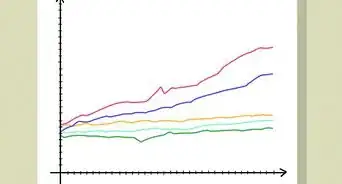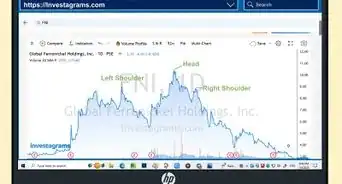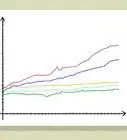wikiHow is a “wiki,” similar to Wikipedia, which means that many of our articles are co-written by multiple authors. To create this article, 16 people, some anonymous, worked to edit and improve it over time.
This article has been viewed 131,917 times.
Learn more...
If in your taxable account, you hold stock in a company acquired by another company in a merger, you need to adjust your cost basis to compute capital gains or losses. Merger considerations may involve cash only, stock of the acquiring company, or a combination of stock and cash (also known as cash to boot). You must calculate your original cost basis for the stock and the cash proceeds you receive after completion of the merger.
As an example, suppose that on Jan 1, 2010, you bought 200 shares of Company A for $25.49 per share. On Jan 1, 2013, a merger is declared, in which Company A is acquired by Company B, with the following three options for each share of Company A you own: (i) $50 in cash, (ii) 1.049 shares of Company B or (iii) a mix of $25 in cash plus 0.5245 shares of Company B, subject to proration, which means shareholders electing the oversubscribed option of either cash or stock will get the under-subscribed option instead, on a prorated basis. You elect all cash, but because of over-subscription to the cash option when the merger is completed on June 1, 2013, you end up with 98 shares of Company B, $5297.18 cash, and $31.72 "cash-in-lieu" of shares.
Steps
-
1Determine the original cost basis of your investment, including any commissions paid. In the example above, you paid $5098 for 200 shares of Company A at $25.49 per share. Suppose you paid $10 commission for this transaction. Your original cost basis is therefore $5108. Dividing by 200 shares of Company A, your cost basis is $25.54 per share.[1]
-
2Find out how many fractional shares of newly issued Company B stock were sold to give you the cash-in-lieu payment, which results from sales of fractional shares you were otherwise entitled to receive, but were sold because only whole shares are issued in a corporate action. Obtain this information from your broker, by looking at the transaction activities in the account in which you held your Company A stock, or from the merger terms. In our example, suppose 0.7049 share of Company B was sold at a price of $45/share, giving you $31.72 cash in lieu of a fractional share.Advertisement
-
3Add the fractional share from the previous step to the number of whole shares, to determine the total number of shares you received. In our example, we add the 0.7049 fractional share to the 98 whole shares of Company B to obtain 98.7049 shares of Company B.
-
4Convert the total number of shares you received of the acquiring company stock to the equivalent shares of the original acquired company stock you held, using the conversion ratio according to the merger terms. In our example, one share of Company A stock was entitled to 1.049 shares of Company B stock, so 98.7049 divided by 1.049 is equal to 94.094 shares of Company A stock.
-
5Multiply the result from the previous step by your original cost basis per share, to get the cost basis for the stock portion of the merger. Subtract the result in the previous step from the total number of shares of the original acquired company stock you own, then multiply by your original cost basis per share, to get the cost basis for the cash portion of the merger.[2]
- In our example, multiplying 94.094 by $25.54 yields $2403.16, which is the adjusted cost basis for the stock portion. Subtracting 94.094 from 200 shares of Company A you originally bought, obtaining 105.906, then multiplying by $25.54 yields $2704.84, which is the adjusted cost basis for the cash portion.
-
6Allocate the adjusted cost basis for the stock portion into the whole share part and the fractional share part, in proportion to the number of shares in each part. For our example, our total cost basis for 98.7049 shares of Company B stock was determined in the previous step to be $2403.16.
- So the cost basis for 98 shares of Company B is $2403.16*(98/98.7049) = $2386, whereas the cost basis for 0.7049 share of Company B is $2403.16*(0.7049/98.7049) = $17.16, which is the cost basis for the $31.72 cash-in-lieu of fractional shares received.
-
7Determine taxable gains and losses by adding up the cost basis for all cash proceeds, and subtracting the result from the total cash proceeds. In our example, we add $2704.84 (adjusted cost basis for the cash portion) + $17.16 (cost basis for the fractional shares sold) = $2722. The total cash proceeds is $5297.18 (cash consideration received) + $31.72 (cash-in-lieu of fractional shares received) = $5328.90. Our capital gain is $5328.90 - $2722 = $2606.90. The purchase date is Jan 1, 2010 and sale date is June 1, 2013, which qualifies us for long-term capital gains treatment for assets held more than one year.
- Please note: if in your case you acquired your original investment in Company A shares at different times over a period that included both long-term (more than one year) and short-term (one year or less) relative to the time the merger is completed, calculate the share-weighted percentages of your original cost basis in long-term and short-term portions, and apply these percentages to separate the proceeds received into long- and short-term portions to report on tax returns. For example, if 150 shares of Company A were acquired more than one year before the merger payout, and 50 shares were acquired less than one year before the merger payout, for a total of $5108, then 75% of your cost basis is long-term and 25% is short-term. The same percentages apply to your proceeds and capital gains. Thus, of the $2606.90 capital gain calculated above, 75%, or $1955.18, would be a long-term gain, while 25%, or $651.72, would be a short-term gain.
-
8Save for future reference the adjusted cost basis of the shares received. You'll need that information should you ever sell those shares. For our example, the cost basis for the 98 shares of Company B is $2386, or $24.35 per share of Company B. Note that the purchase date for this is Jan 1, 2010 when you bought Company A stock prior to the merger giving you Company B stock, not Jan 1, 2013 when the merger was declared or June 1, 2013 when the merger was completed. Again, retain this information for the future when your Company B shares are sold.
Community Q&A
-
QuestionPlease explain the 1.049 shares of B for each share of A. That option was for receipt of shares only. The actual ratio appears to be 98.7049 divided by 200= .49352
 Community Answer1.049 shares of B has the same value as 1 share of A. You must use this ratio to convert 98.7049 shares of B into the equivalent number of shares of A. 200 shares of A is not equal to only 98.7049 shares of B, due to the cash portion received.
Community Answer1.049 shares of B has the same value as 1 share of A. You must use this ratio to convert 98.7049 shares of B into the equivalent number of shares of A. 200 shares of A is not equal to only 98.7049 shares of B, due to the cash portion received. -
QuestionHow do I determine the value of the shares of a publicly traded stock I received in a merger?
 Community AnswerThe initial cost basis would be the stock's price at the time you obtained the shares. So if you had ten shares at $10 per share, your cost basis is $100. If you sell the 10 shares at $11 per share, your capital gain is $10. The average cost basis is the average of the cost of the shares. Most brokerage firms will figure the cost basis for you so you don't have to dig up the details. When selling stock shares, you also typically have the option of "First In, First Out" (FIFO) or Specific Identification "SpecID," the latter allows you to choose which shares you want to sell (for some, selling the shares that rose the least will incur the least tax consequence).
Community AnswerThe initial cost basis would be the stock's price at the time you obtained the shares. So if you had ten shares at $10 per share, your cost basis is $100. If you sell the 10 shares at $11 per share, your capital gain is $10. The average cost basis is the average of the cost of the shares. Most brokerage firms will figure the cost basis for you so you don't have to dig up the details. When selling stock shares, you also typically have the option of "First In, First Out" (FIFO) or Specific Identification "SpecID," the latter allows you to choose which shares you want to sell (for some, selling the shares that rose the least will incur the least tax consequence). -
QuestionI have the cost basis of a stock that was merged with another stock. My stock was absorbed. I now have stock in the new stock. If I sell the new stock, do I use my original cost basis?
 Community AnswerYou would have to use the post merger ACB (adjusted cost base) of the number of shares you now in the new company. You can ask your broker to provide you with your new adjusted cost per share.
Community AnswerYou would have to use the post merger ACB (adjusted cost base) of the number of shares you now in the new company. You can ask your broker to provide you with your new adjusted cost per share.


















-Step-3.webp)















































